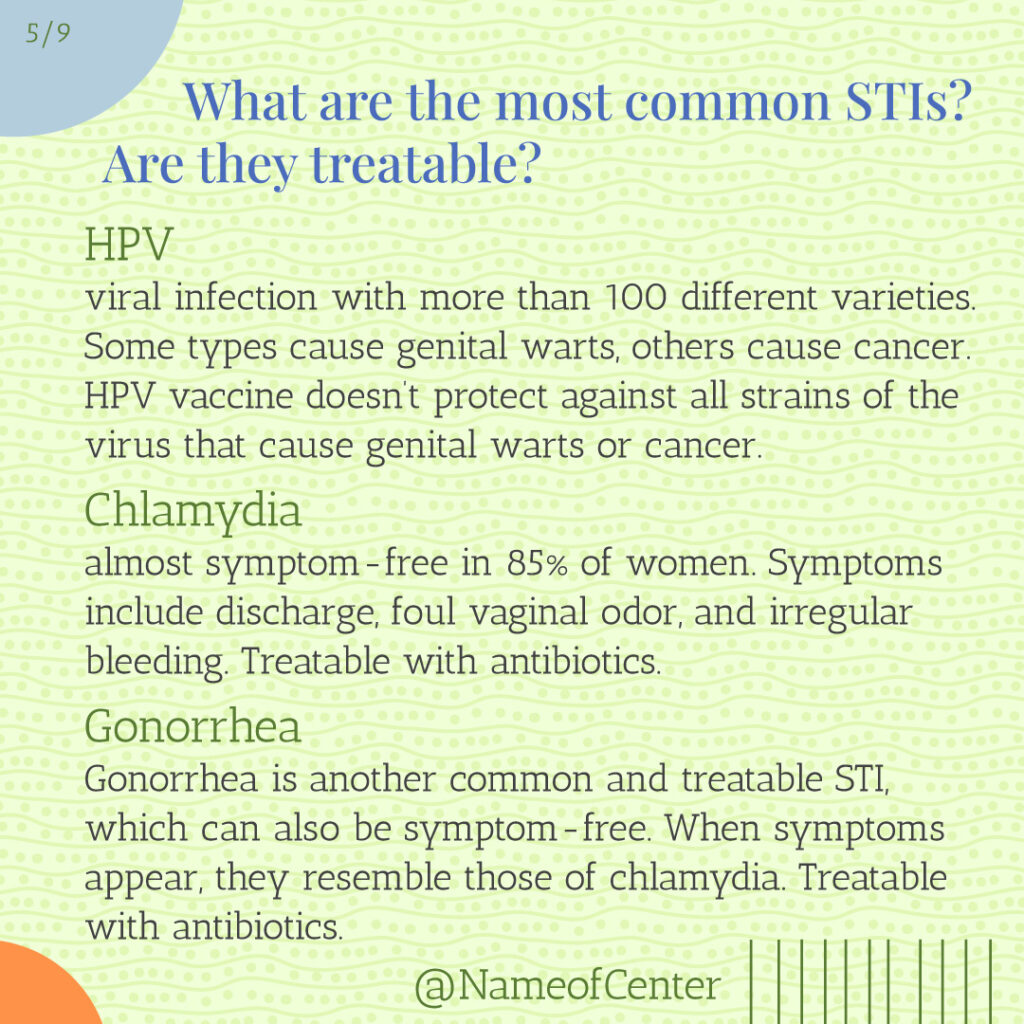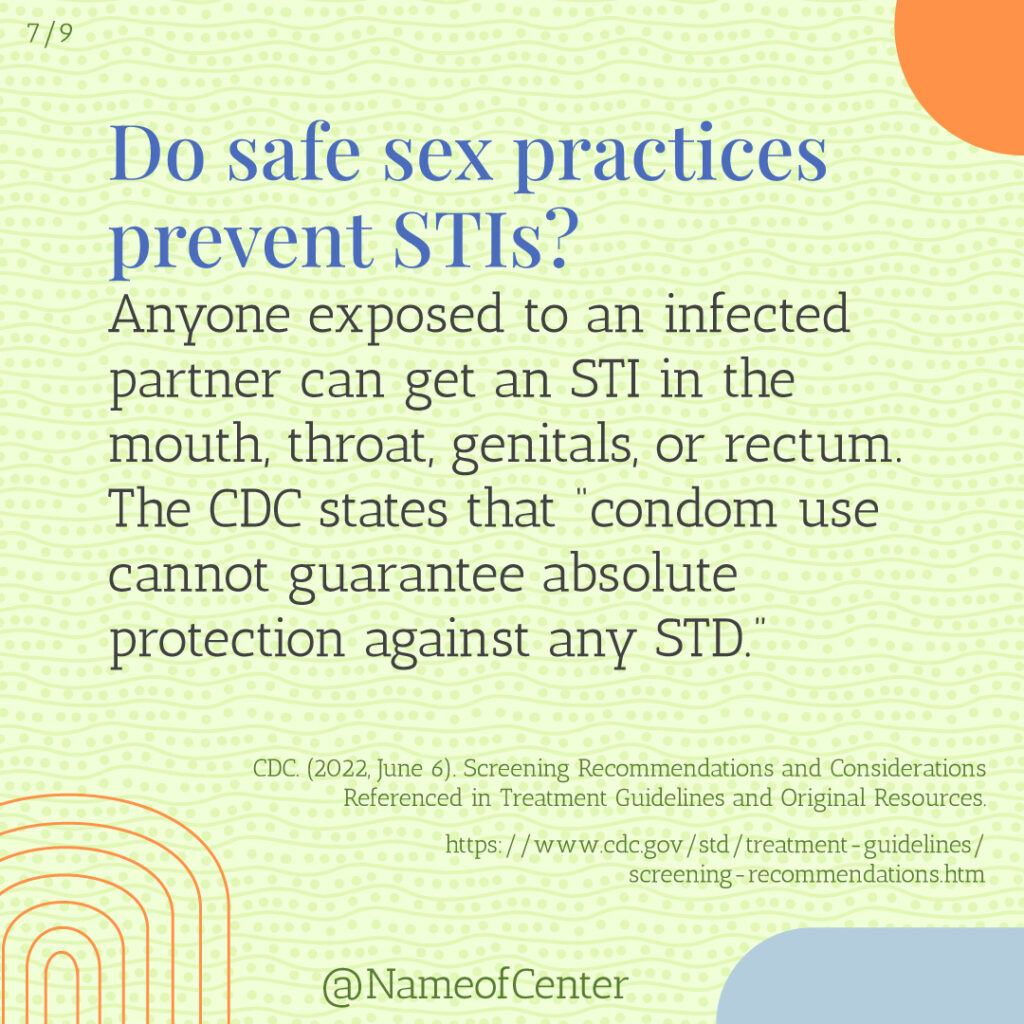Is Free STI Testing Right for You? QUIZ Yourself
Why Free STI Testing?
Are you sexually active? Did you recently have unprotected sexual intercourse? You may be looking for free STI testing. It’s a good idea to get tested if you’ve experienced vaginal, oral, or anal sex with more than one partner. If your partner has other sexual partners, you could be at risk. Even if you use safe sex practices, they may not protect you from a sexually transmitted infection, or STI.
Do you avoid thinking about STIs and hope it won’t happen to you? No one wants to get an STI that could affect your sexual health and your future. If you’re sexually active and have no symptoms, you or your partner could have an STI and not know it. No matter your sexual orientation, the only way to have peace of mind is to get STI testing. The Centers for Disease Control and Prevention (CDC) recommends STI screening (1). Community health clinics and healthcare professionals offer free, or low cost STI testing. Want to learn more about free STI testing?
Not sexually active yet but thinking about it? Want to know more about STIs and how to prevent them? The good news is that young people can get educated about STIs, no matter your sexual orientation. Get accurate information about STIs. You’re in charge of your reproductive and sexual health. You can make healthy decisions and avoid serious health problems in the future.
Test your knowledge of STIs like HPV, chlamydia, gonorrhea, syphilis, genital herpes, and HIV. Find out where you can get free STI screening.

Mobile users: Turn your phone horizontal.
Where can I get free, confidential STI testing?
Your health care provider can refer you for STI testing. A doctor, health clinic, county health department, or local health department may provide a list of clinic locations.
Confidential, free STI testing services
for [NAME STIs].
We can use the same urine sample you give for a pregnancy test. If you get a positive test result for an STI, we’ll treat you and your partner at no cost [DONATIONS ARE OPTIONAL].
Once you receive your test results, we can look at any risk factors for contracting future STIs. Our goal is to find the best way to protect your physical, sexual, and mental health. It’s possible to refer you to more health care professionals for a physical exam, and medical advice.
How Common are STIs (6)?
- According to the Centers for Disease Control and Prevention (CDC), one in five people in the United States had an active STI in 2018. That’s nearly 68 million people.
- There were 26 million new cases of STIs in 2018
- People aged 15 to 24 years old had one in two STIs
It’s very important to get tested right away if you:
- Recently had unprotected sex of any kind, including oral, vaginal, or anal sex
- Have or had many sexual partners or a recent change in partners
- Know that your current sexual partner has or had other sex partners
- Experience itching or burning in your pelvic area
- Have unusual bleeding or discharge
- Have sores on your genitals or in your mouth/throat
- Are pregnant. Having an STI while pregnant (7) can lead to miscarriage, stillbirth, pre-term delivery, and birth defects.
- Have scheduled an abortion. There’s a higher risk of Pelvic Inflammatory Disease (PID) (8) in women suffering from an untreated STI.
What are the most common STIs? Are they treatable?
HPV (9)
Human papillomavirus (HPV) is a viral infection with more than 100 different varieties. It’s the most common STI in the U.S. HPV spreads through sexual intercourse or skin-to-skin contact. Some types of the HP virus cause genital warts. Others can cause cancer of the anus, penis, vagina, vulva, cervical cancer, and throat cancer. You can develop symptoms of HPV years after you have sex with someone infected. The National Cancer Institute (10) cautions the HPV vaccine doesn’t protect against all strains of the virus that cause genital warts or cancer.
Chlamydia (11)
The most common bacterial STI in the U.S. is Chlamydia, and it is almost symptom-free in 85% of women. Some symptoms of chlamydia include discharge, foul vaginal odor, and irregular bleeding. Complications can include Pelvic Inflammatory Disease, ectopic pregnancy, and infertility. If you are pregnant and have chlamydia at the time of a full-term delivery, it can cause an eye infection in your baby. Chlamydia is treatable with antibiotics.
Gonorrhea (12)
Gonorrhea is another common and treatable STI, which can also be symptom-free. When symptoms appear, they resemble those of chlamydia. In women, symptoms include itching, burning and abdominal pain. In men, symptoms include burning during urination and/or a yellow discharge. Untreated, gonorrhea can lead to chronic liver disease, PID, ectopic pregnancy, and infertility. Gonorrhea is treatable with antibiotics.
Other STI/STDs
- Genital Herpes (13)
- HIV/AIDS (14)
- Syphilis (15)
Who gets STIs? Am I at risk?
Are you sexually active? Do you have one or more sexual partners? If so, you’re at risk for getting a sexually transmitted infection, or STI. The infection starts with a viral or bacterial infection. Some STIs enter your body through skin-to-skin contact with a person who has an infection. Other STIs enter by the exchange of body fluids like semen, vaginal secretions, or blood during vaginal, oral, or anal sex. If you have an STI, it can pass to your baby during delivery. During an abortion, an STI can spread to other parts of your body, like the cervix or uterus.
If you’ve only had one or two partners, will you get an STD? When it comes to sexually transmitted diseases, here’s how the former U.S. Surgeon General C. Everett Koop, M.D. (16) describes it:
“When you have sex with someone, you are having sex with everyone they have had sex with for the last ten years, and everyone they and their partners have had sex with for the last ten years.”
Even if your partner has no symptoms, you could both have an STI and not know it. If you had treatment for an STI once, you could become infected again. One of the greatest risks of having an STI is not knowing it. With no treatment, STIs can lead to more serious STDs. They can cause infertility, lifelong disease, or even death. There are many ways to get free STI tests. If you think you’re at risk, get tested right away.
Do safe sex practices prevent STIs?
If I use a condom, it will protect me from STI’s, right? Many people think that using a condom, having oral sex, or engaging in mutual masturbation protects you from getting an STI. Anyone exposed to an infected partner can get an STI in the mouth, throat, genitals, or rectum. Several STDs may spread by oral sex (17) and can then spread throughout the body. Mutual masturbation could also lead to skin-to-skin contact or expose you to the other person’s body fluids.
Many STIs spread by contact with areas not covered by a condom. The Centers for Disease Control and Prevention (CDC) (18) states that “condom use cannot guarantee absolute protection against any STD.” Condoms don’t reduce the transmission of some of the most common STIs (19) that spread through skin-to-skin contact, such as genital Herpes, HPV and Syphilis. Condoms are only 85% effective in reducing the risk of contracting HIV/AIDS (20). That leaves you with a 15% risk of getting HIV from an infected partner. If a condom fails, you are even more susceptible to both STIs and pregnancy.
Does double protection work? In this case, two isn’t better than one. Using two male condoms, or a male condom with a female condom is a practice known as “double bagging.” This practice is likely to offer less protection (21). Friction during sexual intercourse could cause the condoms to rub against each other and break. One condom is better than two, but still not 100% effective in preventing STIs.
Thinking about abortion? Get free STI testing first
If you’re sexually active and have unprotected sex, you may get two unexpected surprises: an STI and a pregnancy. If that describes your situation, are you looking for an abortion clinic? Before you schedule an abortion, do these three things:
- Verify your pregnancy with a medical-grade pregnancy test
- Get an ultrasound scan to be sure the pregnancy is growing in the uterus.
- Get free STI testing and treatment.
[NAME OF CENTER] can help with all three. Make an appointment today.
If you test positive for an STI, get treatment right away before the abortion. Some surgical abortion procedures push STI infections inside the cervix and uterus. That can cause serious problems.
The good news is that chlamydia and gonorrhea are treatable with antibiotics. If left untreated, chlamydia or gonorrhea can lead to Pelvic Inflammatory Disease (PID) (22). PID is dangerous if not treated right away. PID can lead to infertility, ectopic pregnancy, and chronic pelvic pain.
Always test for STIs before an abortion (23) and get treated before having the procedure. It’s vital that you don’t have an untreated STI for a surgical or medical abortion (abortion pill).
Protect your sexual health
As always, our testing process is free, confidential, caring, and compassionate.
For all people of any sexual orientation, [NAME OF CENTER] can work with you to help achieve your long-term relationship goals. Our goal is to encourage you towards relationships with lasting intimacy.
Sources
- CDC. (2022, June 6). Screening Recommendations and Considerations Referenced in Treatment Guidelines and Original Resources. https://www.cdc.gov/std/treatment-guidelines/screening-recommendations.htm
- Healthline. (2021, March 15). What Is the Most Common STD? https://www.healthline.com/health/sexually-transmitted-diseases/most-common-std
- CDC. (2022, June 22). Types of HIV Tests. https://www.cdc.gov/hiv/basics/hiv-testing/test-types.html
- CDC. (2022, April 12). New data suggest STDs continued to increase during first year of the COVID-19 pandemic. https://www.cdc.gov/media/releases/2022/p0412-STD-Increase.html#:~:text=Ultimately%2C%20reported%20cases%20of%20gonorrhea,Control%20and%20Prevention%20(CDC).
- Healthline. (2020, September 9). The One Difference Between STIs and STDs—and How to Minimize Your Risk https://www.healthline.com/health/healthy-sex/sti-vs-std
- CDC. (2021, January 25). Sexually Transmitted Infections Prevalence, Incidence, and Cost Estimates in the United States. https://www.cdc.gov/std/statistics/prevalence-2020-at-a-glance.htm
- CDC. (2022, April 12). STDs during Pregnancy—CDC Detailed Fact Sheet. https://www.cdc.gov/std/pregnancy/stdfact-pregnancy-detailed.htm#:~:text=Untreated%20gonococcal%20infection%20in%20pregnancy,rupture%20of%20membranes%2C%20and%20chorioamnionitis.&text=Gonorrhea%20can%20also%20infect%20an,passes%20through%20the%20birth%20canal.
- Europe PMC. (1982, September 1). Significance of cervical Chlamydia trachomatis infection in postabortal pelvic inflammatory disease. https://europepmc.org/article/med/7121913
- Mayo Clinic. (2022, July 29). HPV Infection. https://www.mayoclinic.org/diseases-conditions/hpv-infection/symptoms-causes/syc-20351596
- NIH National Cancer Institute. (2021, May 25\). Human Papillomavirus (HPV) Vaccines. https://www.cancer.gov/about-cancer/causes-prevention/risk/infectious-agents/hpv-vaccine-fact-sheet#:~:text=Yes.,screening%20recommendations%20for%20vaccinated%20women.
- Mayo Clinic. (2022, February 11). Chlamydia trachomatis. https://www.mayoclinic.org/diseases-conditions/chlamydia/symptoms-causes/syc-20355349
- Mayo Clinic. (2021, October 5). Gonorrhea. https://www.mayoclinic.org/diseases-conditions/gonorrhea/symptoms-causes/syc-20351774
- CDC. (2021, July 22). Genital Herpes—CDC Detailed Fact Sheet. https://www.cdc.gov/std/herpes/stdfact-herpes-detailed.htm#ref5
- Mayo Clinic. (2022, July 28). HIV/AIDS. https://www.mayoclinic.org/diseases-conditions/hiv-aids/symptoms-causes/syc-20373524
- Mayo Clinic. (2021, September 25). Syphilis. https://www.mayoclinic.org/diseases-conditions/syphilis/symptoms-causes/syc-20351756
- Facebook. (2017, April 4). Sexual Exposure Chart. https://www.facebook.com/UCCHealthVine/photos/when-you-have-sex-with-someone-you-are-having-sex-with-everyone-they-have-had-se/1314214491987470/
- CDC. (2021, December 31). STD Rise and Oral Sex—CDC Fact Sheet. https://www.cdc.gov/std/healthcomm/stdfact-stdriskandoralsex.htm#:~:text=Many%20sexually%20transmitted%20diseases%20(STDs,transmitting%20HIV%20from%20oral%20sex.
- CDC. (2021, June 14). Sexual Risk Behaviors Can Lead to HIV, STDs, & Teen Pregnancy. https://www.cdc.gov/healthyyouth/sexualbehaviors/index.htm#:~:text=The%20correct%20and%20consistent%20use,against%20any%20STD%20or%20pregnancy.
- Williams College. (2022). Male Latex Condoms and Sexually Transmitted Diseases. https://health.williams.edu/medical-diagnoses/sexual-and-reproductive-health/male-latex-condoms-and-sexually-transmitted-diseases/
- NIH. (2018, November 29). Condom Use for Preventing HIV Infection. https://www.niaid.nih.gov/diseases-conditions/condom-use
- Bedsider. (2021, November 3). What’s the deal with double bagging? https://www.bedsider.org/questions/2003-what-s-the-deal-with-double-bagging
- CDC. (2021, July 22). Pelvic Inflammatory Disease (PID)—CDC Detailed Fact Sheet. https://www.cdc.gov/std/pid/stdfact-pid-detailed.htm
- Little Way. (2022). Does an STD/STI matter when considering abortion? https://littleway.org/does-an-std-sti-matter-when-considering-abortion/










